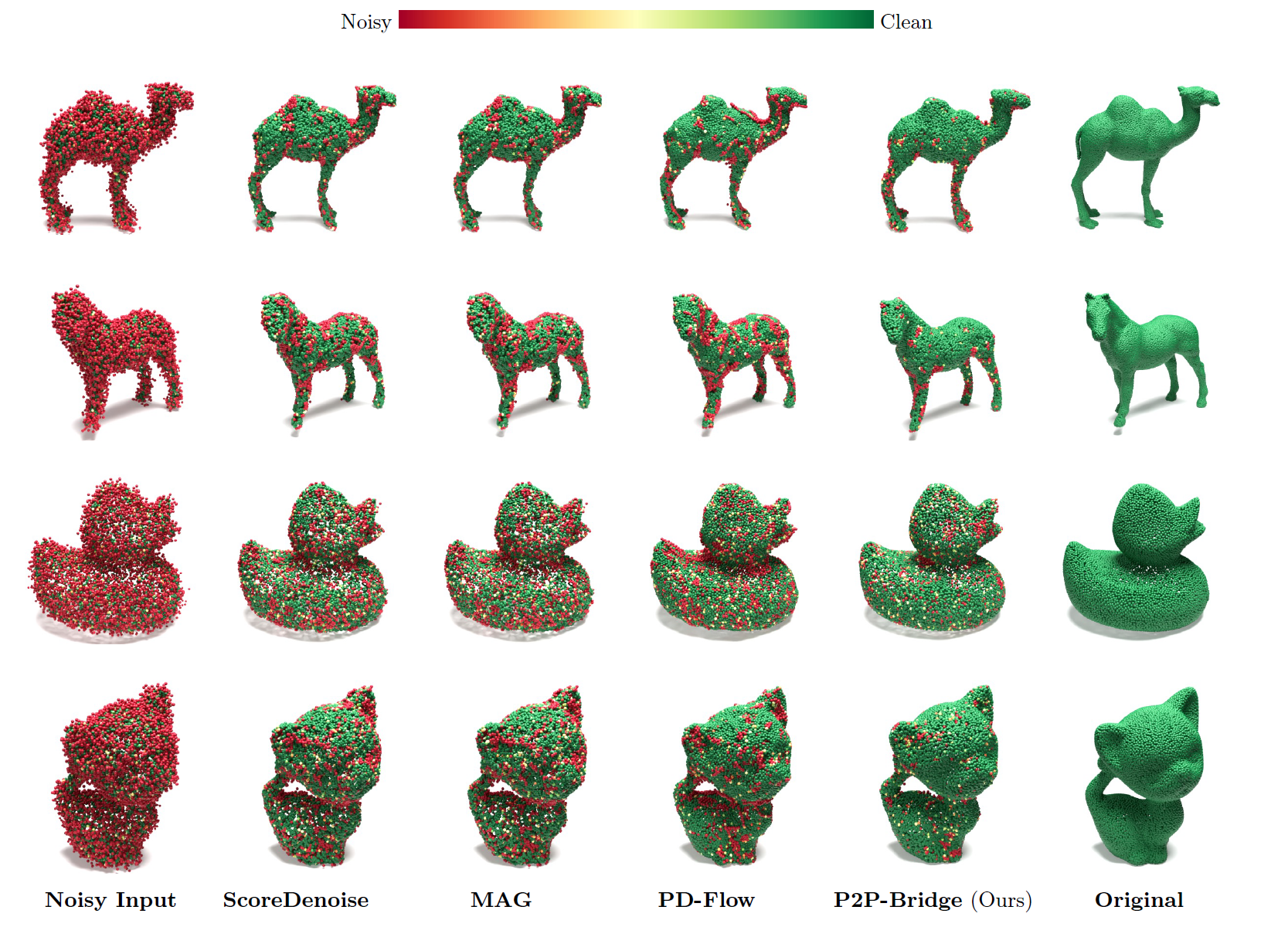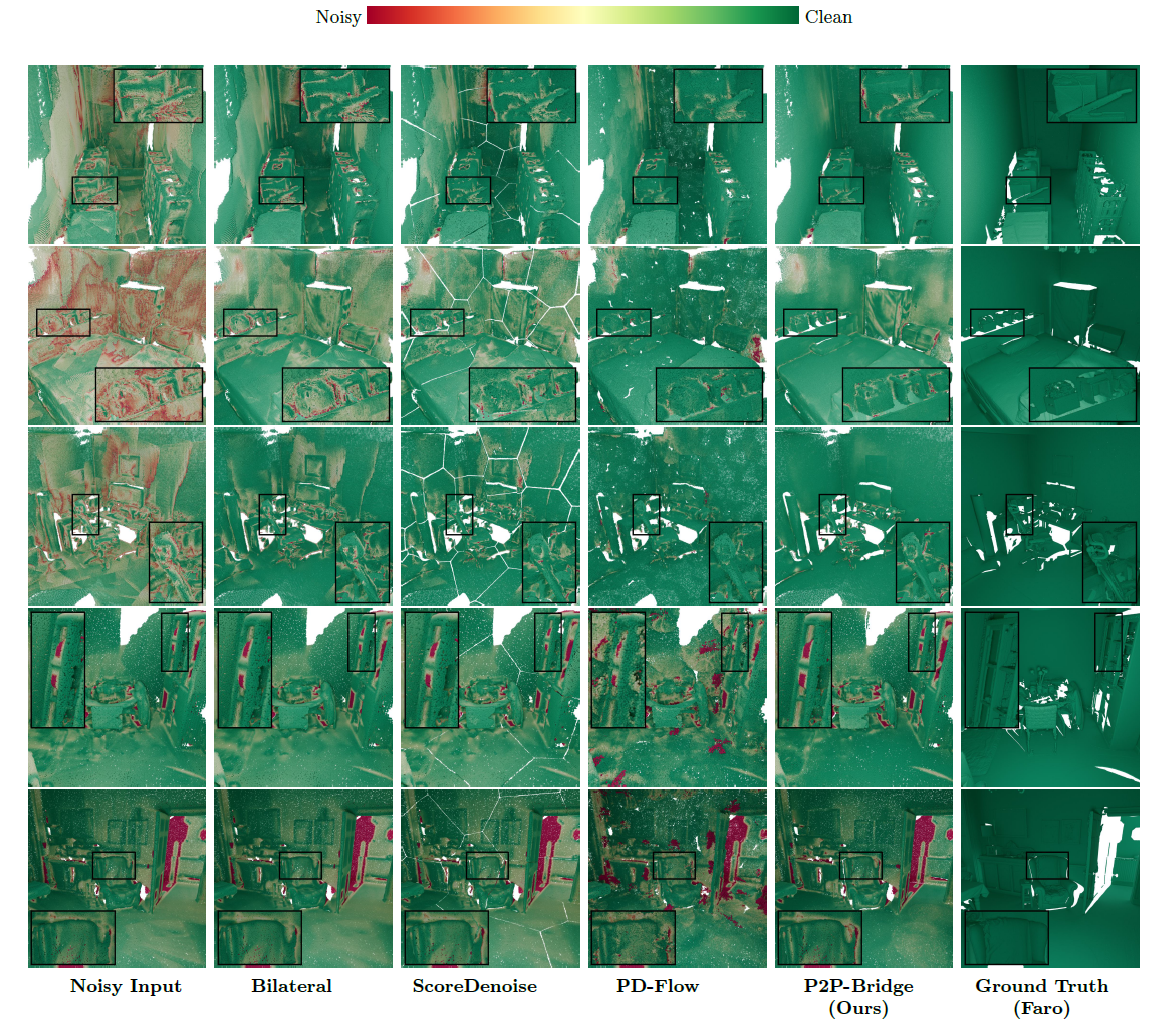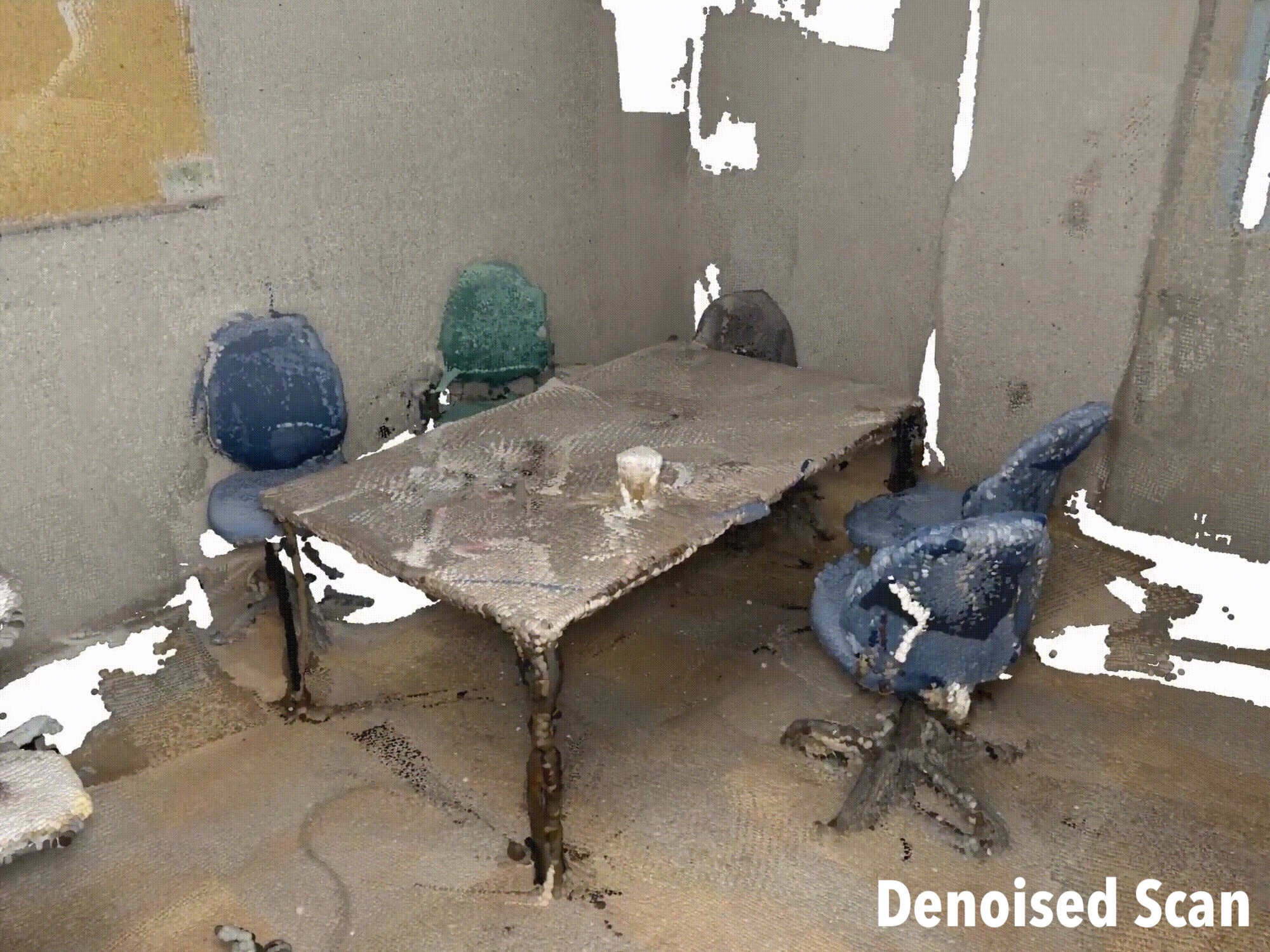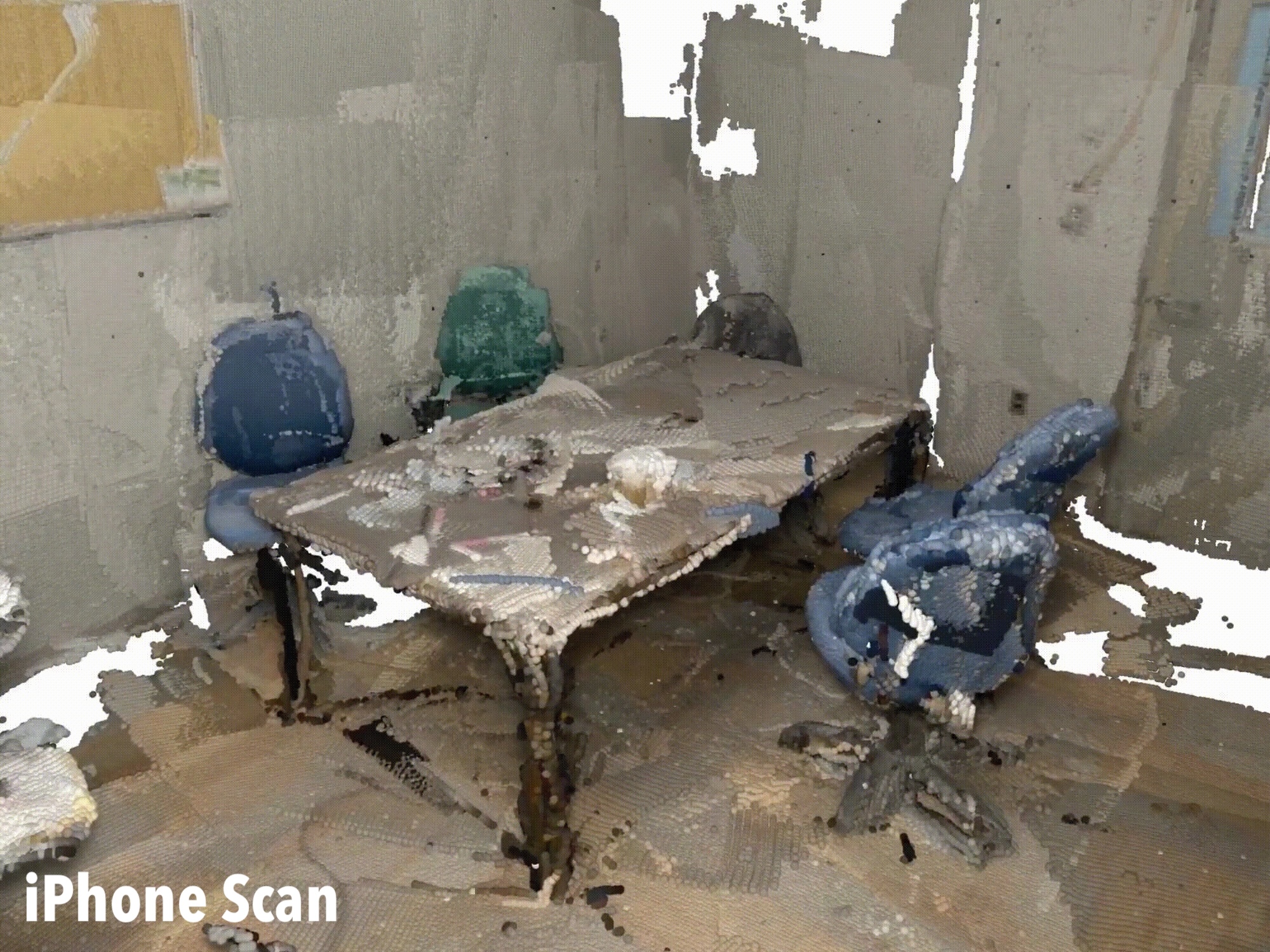In this work, we tackle the task of point cloud denoising through a novel framework that adapts Diffusion
Schrödinger bridges to points clouds.
Unlike previous approaches that predict point-wise displacements from point features or learned noise
distributions,
our method learns an optimal transport plan between paired point clouds.
Experiments on object datasets like PU-Net and real-world datasets such as ScanNet++ and ARKitScenes show
that P2P-Bridge achieves significant improvements over existing methods.
While our approach demonstrates strong results using only point coordinates, we also show that
incorporating additional features, such as color information or point-wise DINOv2 features, further
enhances the performance.





